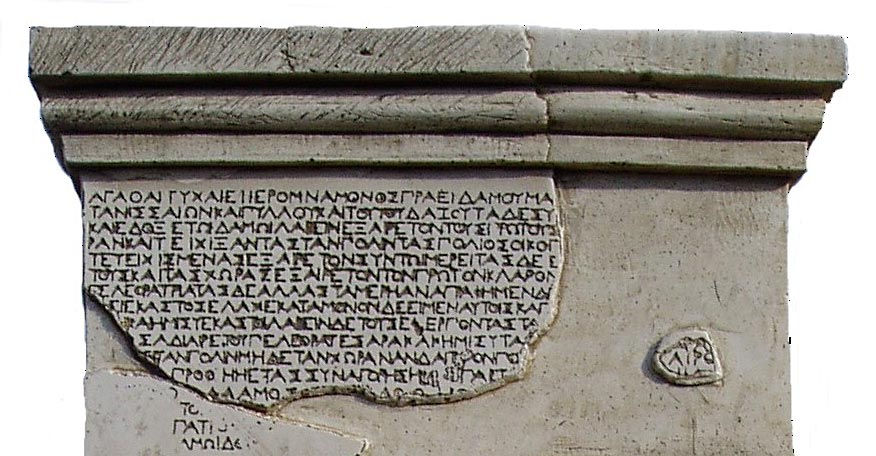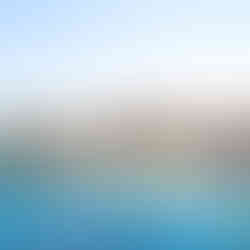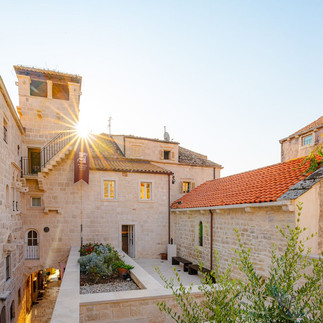Korčula Island: The Secret Birthplace Legend of Marco Polo & Croatia’s Medieval Island Gem
- Teo Drinkovic
- Oct 17
- 6 min read
Uncover the myths, history, wine, cave archaeology & sword dances of Korčula island— the black-island jewel of the Adriatic

Introduction
The island of Korčula is best known for one burning legend: that the world-famous traveler Marco Polo was born there. Rumors swirl of a Polo family home, archival fragments, and whispers in stone alleys linking the explorer to this Adriatic isle. But Korčula is more than myth. It is a tapestry woven from millennia, with cobbled streets that murmur secrets, vineyards scented by salt and sun, and hidden beaches that guard their stories.
Step onto the ramparts, gaze out at the sea, and somehow you feel time leaning in, inviting you to traverse past and present, glass of wine in hand, heart open.
This article is your guide through Korčula’s core: the people, the places, and the myths. By the end, you’ll be itching to book a flight and dive into the Adriatic yourself.
Basic Facts & Geography
Korčula is Croatia’s second most populated island, with an area of about 279 km² (some sources say ~276 km²) and roughly 14,600 inhabitants as of recent counts.
Its length is about 46.8 km, with a narrow width averaging ~8 km. Wikipedia The strait separating it from the Pelješac peninsula is very narrow in places; in classic representations, it’s said to be just about 1.3 km at its shortest point (though published figures vary).
The climate is quintessentially Mediterranean: summers are warm and dry (average ~26.9 °C in the high season, per your original), winters are mild (your 9.1 °C aligns roughly with observed averages). The biodiversity is rich: you’ll find dozens of orchid species on the island, including a rare endemic black orchid (though local botanists debate its precise status).
Town of Korčula
Source: Google.com
A (Condensed) History of Korčula
Human presence on Korčula stretches deep into prehistory. Archaeological evidence indicates settlement in Mesolithic and Neolithic times, later followed by the Illyrians. When Greeks arrived in the 6th century BC, they christened it Korkyra Melaina (“Black Korčula”), likely in reference to dense pine forests or dark vegetation.
In the village of Lumbarda, one finds the Lumbardski Psephisma, a Greek inscribed stone dating to the 3rd century BC. It records an agreement between settlers from the Greek colony of Issa (modern Vis) and the local Illyrians on land division and mutual rights. This is often cited as the oldest known written public document in present-day Croatian territory.
Lumbardski Psephisma, a Greek inscribed stone dating to the 3rd century BC

Korčula then passed through a succession of rulers: Romans, Byzantines, Slavs, medieval local lords, and eventually Venice, which left lasting marks in architecture and urban layout. In Blato, you can see remains of Roman villas and early Christian churches. Meanwhile, Korčula Town stands as a refined medieval gem, fortified and preserved across the ages.
Settlements & Administration
The island is divided into five municipalities: Grad Korčula (the Old Town location), Lumbarda, Smokvica, Blato, and Vela Luka. Within these lie smaller villages, hidden coves, and quiet agricultural zones. Each area offers a different tempo:
Lumbarda is synonymous with vineyards and sandy beaches
Blato and Čara for agricultural life
Račišće with a fishing character
Žrnovo is known for traditional lifestyles and historic hamlets.
Museum of Marco Polo, Bishop's treasury, and Gabrielis Palace in Korčula, Croatia
Source: Google.com
Old Town Korčula & Main Attractions
Korčula’s historic core is remarkably intact. Positioned on a peninsula, the town is shaped like a shell, ringed by walls and towers. The layout is in a fishbone (herringbone) pattern diagonal side streets off a main spine, designed to improve airflow and shade in summer.
The Cathedral of St. Mark dominates the central square with its Gothic-Renaissance style. Inside, there are works attributed to Tintoretto and other masters. Nearby, you’ll discover:
Opatska Riznica (Abbey Treasury): A compact but powerful collection of Dalmatian religious art from the 15th–16th centuries.
Marco Polo House (Kuća Marka Pola): Though interior exhibits are modest, the tower and loggia are the main draw. Whether this truly was his birth home is debated.
Museum in Palača Gabrielis (Gabrielis Palace): Provides context to Korčula’s history, culture, and viniculture.
Collection of icons in the House of the Brotherhood of All Saints: A more niche collection, focusing on ecclesiastical art.
One charming stop: Massimo Bar, perched on a 15th-century tower. To reach the terrace, you need to ascend a ladder through a small hatch. Drinks arrive via a pulley system. It’s sunset theater, drinks in hand.
The Legend (and Reality) of Marco Polo on Korčula
This is where fact meets storytelling. Locals ardently claim Marco Polo was born in Korčula in 1254, in a Polo family that lived under Venetian dominion.
The story grows vivid: in 1298, while Polo was commanding a Venetian galley, he was captured near Korčula in a naval clash with Genoa.
In captivity in Genoa, he allegedly dictated Il Milione (commonly called The Travels of Marco Polo) to a fellow prisoner, Rusticello of Pisa. This tale cements Korčula’s spiritual claim on his name.
Marco Polo, wearing the 13th-century costume that was common at the time, stands in front of his house in Korčula

This picture is the property of the author, and it was made with an AI program
Yet historians remain skeptical. The Orlić paper describes the claim of a Korčulan origin as a constructed tradition; the historical record about Polo’s early life is scant, and most accepted sources place his family primarily in Venice.
Some documents show members of the Polo/Depolo family in Korčula, and “Depolo” street names remain part of the lore.
At the very least, Korčula claims him in spirit, the house, the festivals, the narrative survives whether or not the bloodline does. Later life connections are more secure: Polo’s writings, Venetian career, and influence belong in a broader Mediterranean sphere; in that sense, Korčula is part of his network, even if not his literal cradle. Korčula now honors him via museums, festivals (Marco Polo Fest), and cultural programming.
Birthplace (The House) of Marco Polo in Korčula, Croatia

Source: Google.com
Gastronomy & Wine
Korčula’s kitchen is sincere and rooted in place. Seafood, olive oil, local cheeses, figs, honey, and domestic sausages are staples. But the stars are the wines. This island has earned the nickname “the black island of white wines” thanks to autochthonous varieties like Pošip and Grk. Grk is especially unique; it is grown only in limited areas of Lumbarda and rarely exported, making tasting it on site an insider delight.
Visiting a small winery, sitting beneath vines, hearing the vintner’s stories as you sip, that’s the genuine ritual of Korčula.
Culture, Events & Adventures
One of Korčula’s greatest cultural treasures is Moreška, the sword dance which dramatizes the eternal duel between good (white king) and evil (black king) over a beautiful maiden. It’s vibrant, visceral, and deeply woven into local identity.
For the adventurous: diving, hiking, cycling, sea kayaking, and boat trips to nearby islets (Badija, Proizd) await. The Vela Spila cave near Vela Luka showcases archaeological layers from thousands of years of human habitation.
At night, Korčula isn’t wild, but it has charm. Bars in old town host live music, local klapa singing, and acoustic sessions. Blue Club and Boogie Jungle are among the noted spots for DJ sets in the summer months.
When, Why & How to Visit
Best months: late May, June, September. You avoid the crush of tourists, the weather is excellent, and nature is in bloom. July and August are peak season, crowded but lively.
No airport: you must reach Korčula via ferry or catamaran from Split or Dubrovnik, often via intermediate islands.
Once on the island, travel is by car, scooter, or local buses, though many paths are best experienced on foot. Pack good walking shoes and beach sandals. For photography, the best moments rarely come when you’re pointing your phone; they come when you let the moment carry you.
Final Thoughts
Korčula seduces slowly. It doesn’t shout; it invites. You start with stone streets and legends, move through sunlit vineyards and sea breezes, and perhaps end in the glow of a sword dance on a summer night. Whether or not Marco Polo was born here, his spirit fits the island perfectly, a crossroads of commerce, myth, and sea.
If I were you, I’d book that ticket now, let Korčula’s stones whisper to you directly.


















Feel free to comment!